This section contains entries about our botanizing in Baja California written for the UC BEE (Oct 2012 to Aug 2021)
and The UC Bee Hive (2022-), monthly newsletters for volunteers and staff of the UC Berkeley Botanical Garden.
Click on any photo for a larger image.
BEE MARZO 2018
Petroglifos — Playa Los Lobos
This has not been a great month for botanizing. Besides being busy with other obligations, the weather has been windy and dusty, with only a few windows of calm, clear weather. However, we took advantage of a couple of lovely days to get out into the field to enjoy nature.
While wandering at the Ojo de Agua one day, we met Paco Amador, a local rancher who was watering his livestock, and we got to talking about local plants. I mentioned I was hoping to go again with Marcelo (of last month's dune adventure) to some canyon to search for a plant that has only ever been collected once on the peninsula by Reid Moran in 1952. Paco said he was a relative of Marcelo (of course he was in this small community!) and his ranch was near the mouth of Bahia Concepcion, perhaps the same area where Marcelo and I were hoping to explore.
The majority of the peninsula is wild, with only a small portion known to outside researchers. It is the local ranchers and residents who are the experts on the presence and location of many of the plants, animals and archeological sites on their lands and it has been surprising to learn, in talking to a number of them, how many petroglyphs exist out in the mountains. Paco invited us to arrange a visit to his ranch and he said he'd take us to see the petroglyphs there and maybe we could look for the mystery plant as well.
Bahía Concepción — January 2018
A small group of us took him up on the invitation and drove out to his ranch. He was very knowledgeable and helpful as we drove up a rough rocky road along the side of the arroyo. We parked and then he led us up a low but steep and bouldery arroyo bank. It was definitely worth the effort. Paco really wanted to take us farther up the canyon so we could look for the "long-lost" plant, but the road was really rough and while both vehicles had 4WD, none of us were excited about having to creep and crawl for another 5 km (3 miles) over the rocks that had been washed down into the arroyo bottom after this summer's rains.
Instead of continuing up the arroyo, we made a side trip up to the microwave tower, which is still nonfunctional after more than a year. The road ended at the tower, at an elevation of about 260 m (845 ft), though the mountain behind us continued for at least another few hundred feet. There was a great view of the Bay and opening to the Gulf.
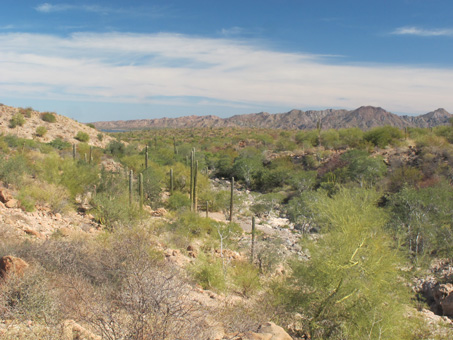
View of the canyon and Bahía Concepción.
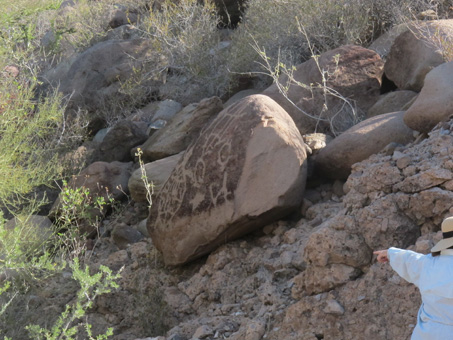
Boulder with petroglyph on hill above arroyo.
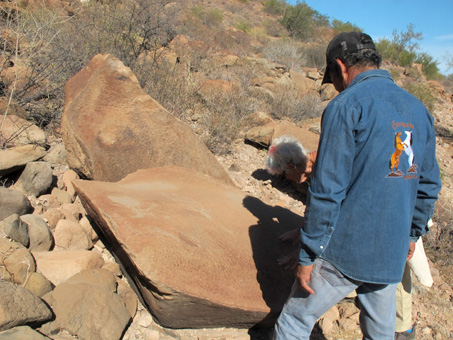
A large volcanic boulder with petroglyphs and grinding areas (metates).
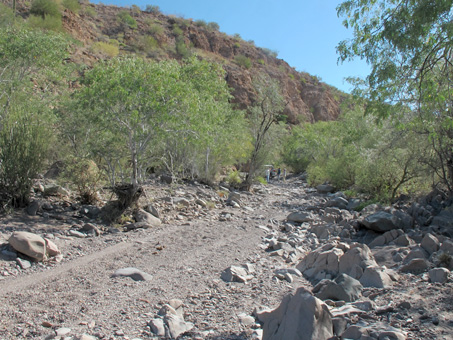
I waited behind while the others scouted ahead on the rocky, bouldery arrroyo bed. We decided to turn around.
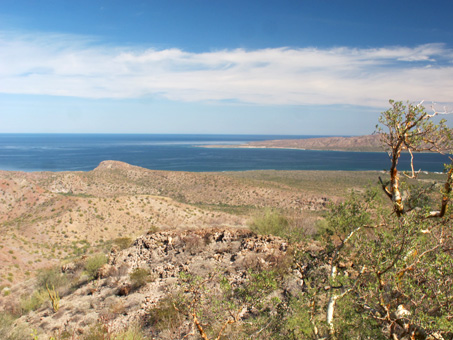
...where there was a spectacular view, with a cliff dropping off below our feet, the Gulf and Bay in the distance, and a plant I didn't expect to see: a Copalquín (Pachycormus discolor, Anacardiaceae).
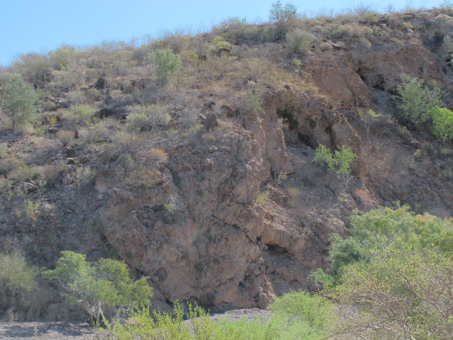
Cliff face rises 8-10 m above the arroyo bed.
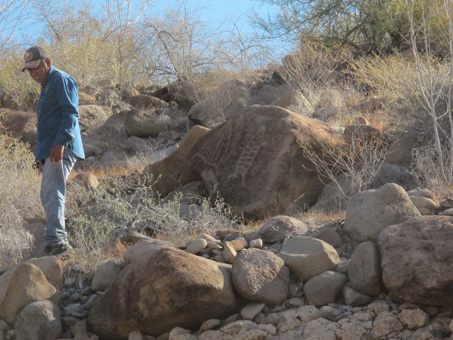
Paco is nimble and helped us on the rocky trails.
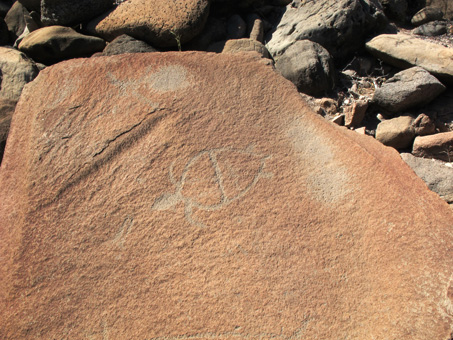
Large boulder up closer. Sea turtle and metates.
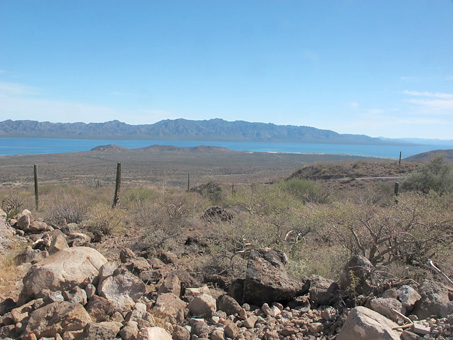
The twisty, narrow, cobbled road up to the tower required a lot of concentration. We were all very tired, by the time we got to the top. I was the only one who wanted to follow Paco up behind and around the tower...
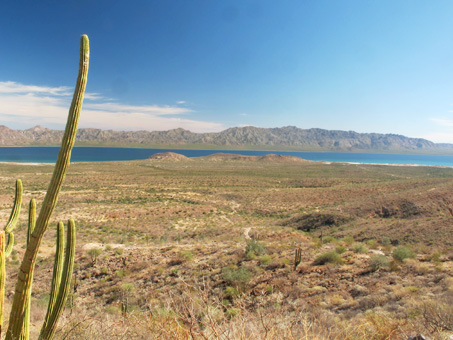
Heading back down the road, enjoying the scenery was difficult as I had to avoid huge slumped parts of the cobbled roadbed and avoid careening off the edge of the narrow, twisty road. Organpipe Cactus /Pitahaya dulce (Stenocereus thurberi) on the left.
Playa los Lobos — January 2018
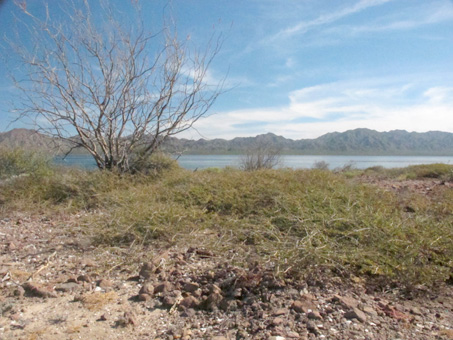
Playa Los Lobos is exposed to the winds that sweep down the Gulf and into Bahía Concepción. Here, the Golondrinón (Euphorbia magdalena, Euphorbiaceae) on the right side are hunkering low and spreading out, exhibiting signs of wind pruning.
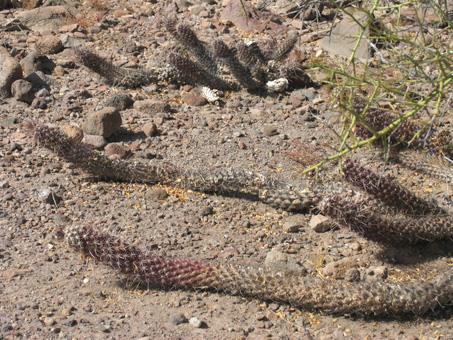
Biznaguita (Cochemiea poselgeri, Cactaceae) is a multi-stemmed cactus endemic to BCS. It grows mostly close to the coast, at least in our area. Its stems can reach 2 meters (4 ft) in length! As seen here, it commonly grows out underneath other shrubs or trees. As it creeps, it roots along the stem, the older parts often dying off.
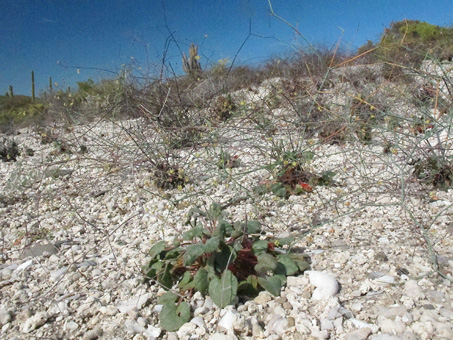
Desert Trumpet/Guinagua (Eriogonum inflatum, Polygonaceae). This species seems to be almost exclusively found on outcrops of ancient seabed near the coast, at least in this area. This was a particularly hearty colony. The plant is usually very wispy & almost invisible when the ephemeral leaves have died back.
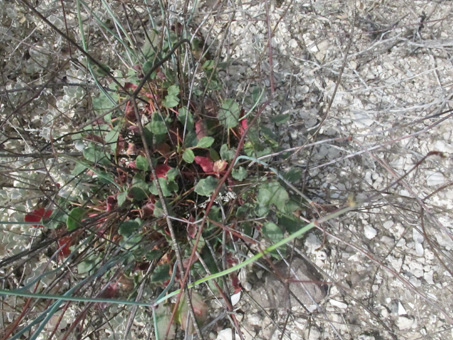
For a long time, this form of the plant was known as Eriogonum. i. var. deflatum because the stems are slender and lack the characteristic bulge of var. inflatum seen more commonly in the northern part of its range (see photo to right). The growth habit is usually low, open, wispy, and intricately branched (angled and intertwined).
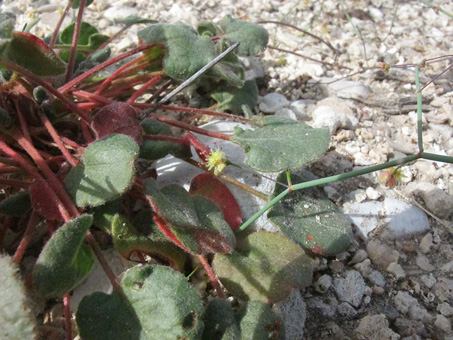
Like leaves of many of the buckwheats, the leaves are densely hairly and two-toned. Green with reddish undertones above and silvery below.
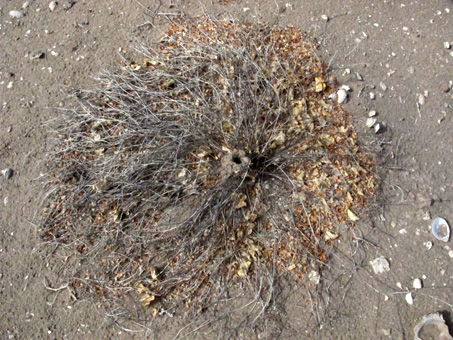
This Wolf Spider nest is placed right in the middle of a dead Parry Dye Bush plant. The turret is integrated into the dead stems and they probably provide the spider with an excellent early-warning system for prey or predators moving across the twigs.
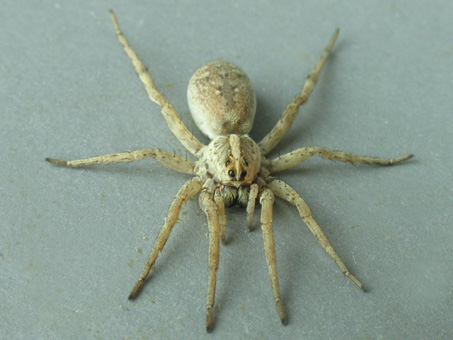
The likely resident species of the above nest. This wolf spider was seen at a nearby beach a few years back. Its body is densely furry and is about 25 mm L. The overall diameter with legs can span about 6-7 cm.
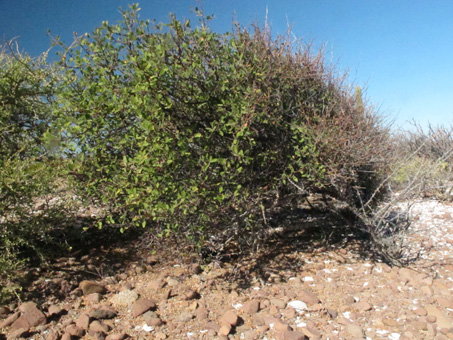
Closer still to the beach, this Baja California Elephant Tree/Torote Colorado (Bursera epinnata, Burseraceae) is showing signs of both wind and salt-spray pruning. The trunk is bent away from the prevailing wind, the branches closest to the beach (right) have few or no leaves, the foliage is thickened and the plant is compact and squat.
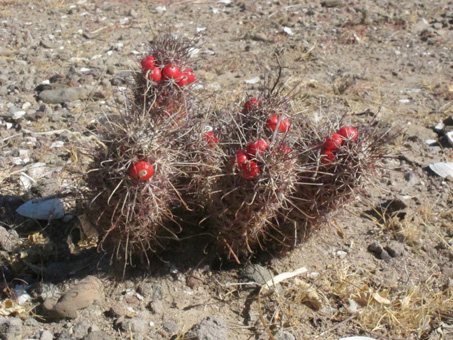
The hummingbird-pollinated flowers are large, tubular and scarlet. Click here to see an image of the flowers. The fleshy round to oblong fruit are edible but bland. The stems are usually a reddish-brown when the plant is in full sun.
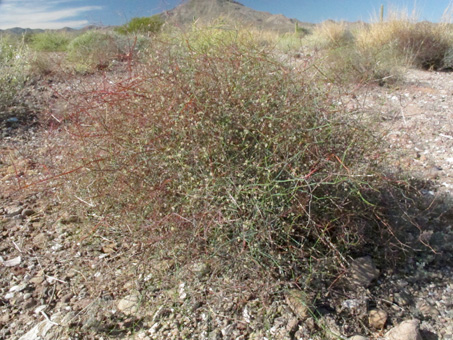
This was an unusual specimen of Desert Trumpet. It was closer to the beach and was so dense and compact that I couldn't see through it. It didn't fit any recognizable plant in my brain's database until I got up close enough to see the tell-tale stems and flowers. Click to enlarge this and the image to the left and compare their densities.
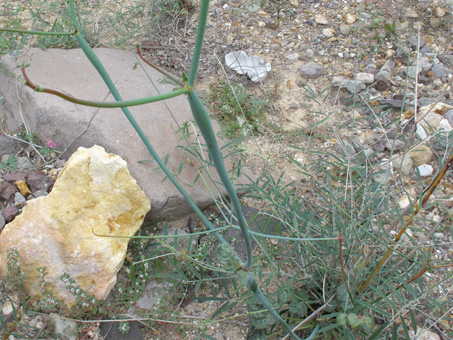
Stems more typical of Desert Trumpet. Note the bulge in the stem. I've rarely seen this feature in the plants here. These plants were much taller and erect, with less intricate branching than the form on the left.
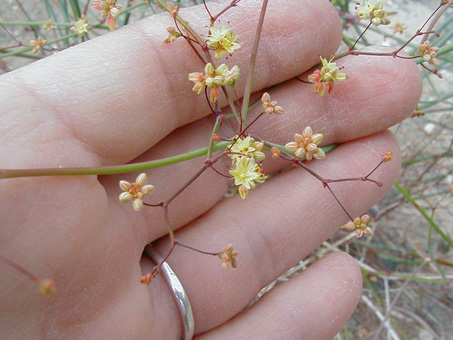
Flowers are tiny, 3-4 mm in diameter, and have 6 tepals.
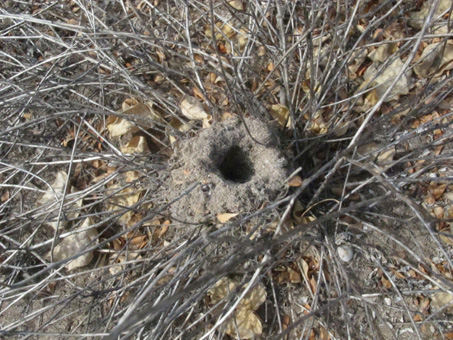
Looks like a sturdy mud turret, but in fact it is soft and spongy to the touch, being made of fine sand, silt and/or plant debris bound with silk threads. It measures about 3-5 cm D and 2.5 cm H. The opening is about 10-15 mm D.
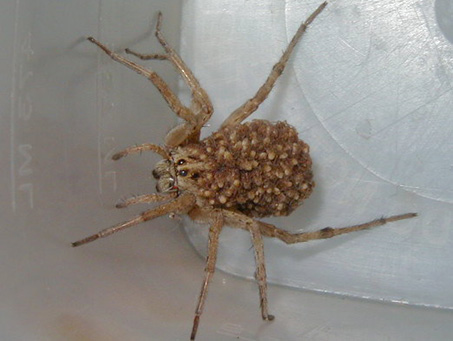
Another specimen seen at a nearby beach. This female has her babies riding on her back. The spiderlings will remain there for a number of days before setting off on their own. We managed to trap this one without disturbing the large number of youngsters. When disturbed, they may shoot off her back in all directions, as a friend once told us she had witnessed in her bedroom.
That's it for this month. I hope to have some more interesting plants and sights to share with you next month from our upcoming trip up into the Pacific drainage of the mountains behind Mulegé. Until then, hasta la próxima…
Debra Valov—Curatorial Volunteer

























